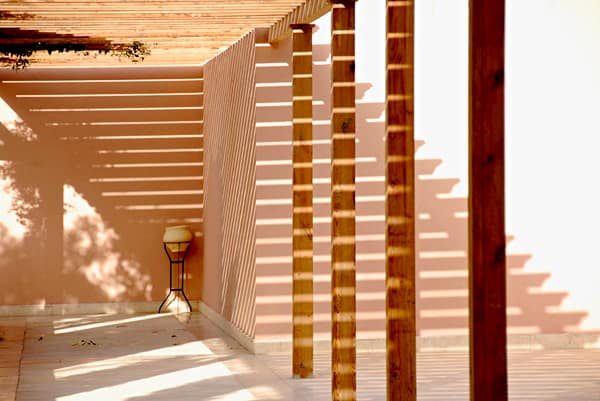Pergolas are great for outdoor spaces since they offer shade and visual beauty, functioning as a calm zone. However, it is crucial to pick the perfect pergola cover that matches your comfort and pleasure needs. There are numerous options available in sun shade for patio so you should consider various aspects such as what material is used in making it; does it last long or look good aesthetically (but not function well)?
Understanding your needs
Before we delve into the details of pergola covers, let’s first evaluate your needs and tastes. Think about:
- Purpose: Figure out how you wish to utilize your pergola. Will it be for dining, lounging, entertaining guests or just as an ornament?
- Climate: Consider the weather where you live. Do you require shielding against strong sunshine, rain, or snow?
- Aesthetic Preferences: You can consider the style and design features that match your outdoor area. Do you desire a rural, contemporary, or classic appearance?
- Understanding these aspects will guide you in making informed decisions throughout the selection process.
Types of pergola covers
Many kinds of covers can be chosen for your pergola, each with advantages and looks. Some well-liked choices are:
- Fabric covers: These are usually created from materials like polyester or acrylic, and they offer flexibility with many different colours and patterns. They provide a medium shade and can be removed for washing or keeping away.
- Retractable awnings: You can use these awnings to get shade and block the sun’s brightness. They are flexible, so you can extend or pull them back using a hand crank or motor. This helps adjust according to weather changes.
- Wooden lattice panels: People select wooden lattice panels because they look good and offer some shade. They allow sunlight to enter but in a screened way, and you can grow climbing plants such as ivy or vines on these panels. It promotes the feeling of natural surroundings.
- Thatched roof covers: Putting a thatched roof on top of your pergola feels like vacationing in the tropical islands.
Considerations for material selection
The material used to construct your pergola cover is important because it impacts how long-lasting the cover will be, how easy or difficult maintenance might be and its general effectiveness. Some regular materials for making pergola covers are:
- Fabric: Opt for good quality fabrics that can handle weather conditions, like polyester or acrylic. Make sure they are treated to resist sun fading and prevent mould and mildew growth.
- Wood: Cedar, redwood and pressure-treated pine are commonly used for pergola covers made of wood. It’s good to choose wood that resists rot and comes from sustainable sources.
- Metal: For the frames and support structures of pergolas, aluminium and steel are widely used. They provide robustness and toughness, needing little upkeep.
- Polycarbonate: Choose polycarbonate panels that resist UV for more strength and lasting power. Seek those with a multi-wall structure to improve insulation and scatter light better.
Think about the upkeep needed, durability and beauty of each material.
Assessing durability and weather resistance
Due to their location, pergola covers are vulnerable to weather conditions. Therefore, it is important to select a cover that can handle the following situations:
- UV Protection: Opt for materials that offer UV protection, preventing fading and harm due to sunlight exposure.
- Water Resistance: Choose covers that can resist water or are entirely waterproof to shield your outside space from rain and moisture.
- Wind Resistance: Pick a pergola cover that can withstand moderate to strong wind, particularly if you stay in an area with gusty conditions.
- Resistance to Mold and Mildew: Pick things that don’t promote the development of mold and mildew, so your outdoor space stays neat and free from germs.
Budget considerations
Setting a budget ahead of time can help you focus on certain choices and stop from spending too much. Think about not just the starting expense of the pergola cover but also the money needed for keeping it in good condition over time. Good quality materials may require more money at first, but they usually last longer and need less frequent change or fixing.
Installation and maintenance
Finally, consider how easy it is to install and keep up with the pergola cover you select. Some covers might need a professional to set them up, but others can be easily put in place by yourself using simple tools and skills. Also, tasks like cleaning or sealing wooden covers from time to time, as well as adjusting retractable mechanisms every now and then, should be considered.
Conclusion
The process of picking the finest pergola cover or even gazebo curtains for your outside area is a thoughtful one, taking into account what you need and like, as well as how much money you can spend. By learning about the various kinds of covers, considering materials available, evaluating strength and resistance to weathering effects, along with thinking on setup and maintenance needs – this way helps guide in making an informed decision that will continue to improve both visually & practically aspects within your outside sanctuary throughout future time periods.








